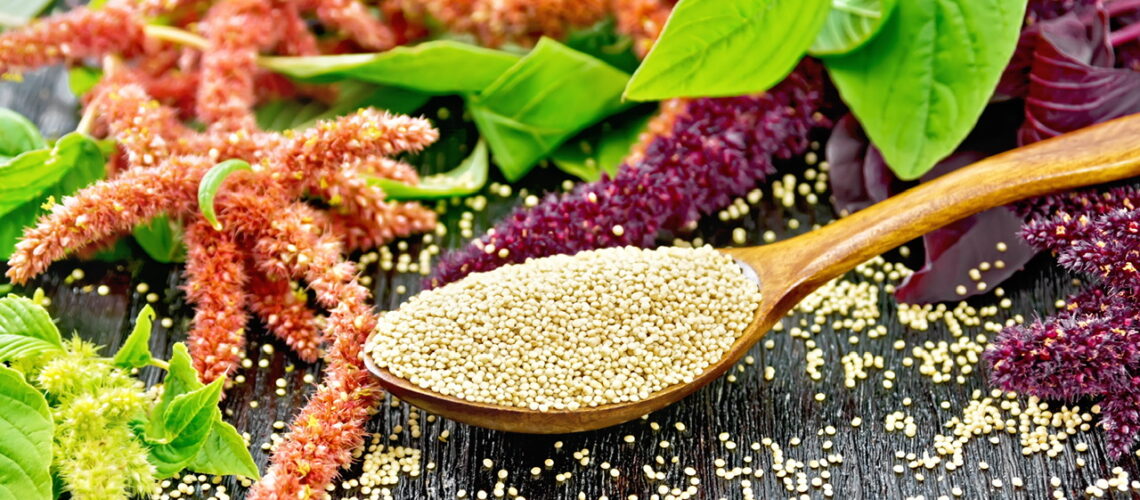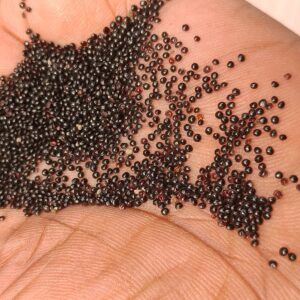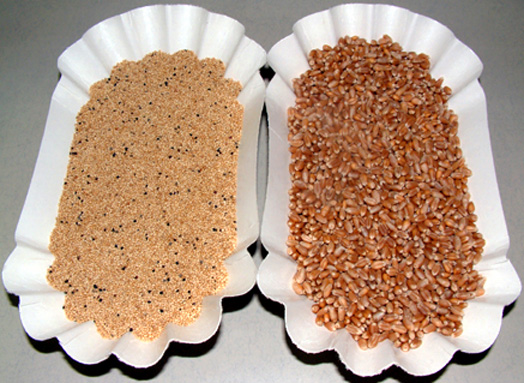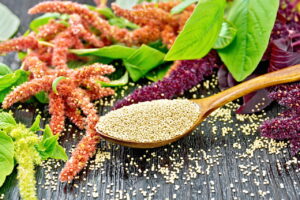Amaranth: A Lesser Known Niche Grain

The information sheet below came to me over twenty years ago from Grain Process Enterprises. The title (Amaranth: A Grain With A Future) led me to wonder if this gluten-free pseudograin would become a more popular health food. Interestingly, this did not happen. I would say that over the past couple of decades amaranth has remained a lesser known niche grain even among those who are interested in gluten-free baking.
What did become popular were quinoa and chia seeds. Grain-free flours made from almond and coconut also exploded onto the scene as more people tried the paleo and keto diets. More recently I have heard of sweet potatoes, plantains and green bananas being made into grain-free flours. We’ll see if they become popular or not.
Meanwhile, if you’re interested in trying different grains / pseudograins, consider amaranth. It’s gluten-free, has a good protein profile and lots of minerals. Scroll down to check out the original fact sheet.
Amaranth: A Grain With A Future
Courtesy, Grain Process Enterprises, Summer, 2001

Brief History
Amaranth is native to Mexico and Central America where it was once a staple of early native American civilizations. It fell into disuse following the Spanish conquests in the 16th century.
Amaranth grain is presently used in many different cultures around the world. The seed is very valuable as a foodstuff and as a cash crop in areas of Nepal and India. It continues to be a specialty crop in Mexico and South America.
Characteristics
Amaranth is a fast-growing, drought resistant plant that produces a small seeded grain in a sorghum-like head. The most commercially useful amaranth seeds are pale-colored, lenticular in shape and generally about 1 – 1.5 mm in diameter. Grain Amaranth has a sweet, nutty taste, and a high quality protein content. The relative ratios of the essential amino acids (i.e.: lysine and methionine) compare very well to that of an “ideal” protein. (Standard protein scored at 100, amaranth 75 and wheat 53). The grain also contains a high level of unsaturated fatty acid, dietary fibre and minerals as compared to the conventional cereal grains.

Benutzer:Burgkirsch photo / Wikimedia Commons
Nutritional Value For Average Amaranth and Wheat
| Proximate | Amaranth | Wheat |
|---|---|---|
| Protein | 15.5% | 14.0% |
| Total Lipid (fat) | 7.6% | 2.0% |
| Total Dietary Fibre | 17.5% | 16.5% |
| Ash | 3.2% | 1.9% |
| Total Carbohydrates | 64.5% | 60.0% |
| Food Energy (calories per 100g) | ||
| 366.0 | 343.0 | |
| Minerals (mg per 100 g) | ||
| Calcium | 187.0 | 39.0 |
| Phosphorus | 455.0 | 383.0 |
| Magnesium | 288.0 | 22.0 |
| Iron | 10.0 | 3.5 |
| Copper | 0.9 | 0.2 |
| Zinc | 3.8 | 1.0 |
| Sodium | 32.0 | 3.0 |
| Potassium | 420.0 | 388.0 |
| Vitamins (mg per 100g) | ||
| Thiamin | 0.10 | 0.54 |
| Riboflavin | 0.21 | 0.12 |
| Niacin | 1.31 | 6.36 |
Practical Uses
Amaranth seeds can be popped like popcorn, expanding to about 10 times the original volume. The popped amaranth has a toasted, nutty flavour, and can be used in a variety of ways: in confections bound with sorghum, molasses or honey and in high-energy granola bars. Because amaranth has very little gluten, if any, it is recommended to use 50:50 ratio of amaranth flour to whole wheat flour in a sweet dough. When amaranth seed is boiled in water and then chilled, it develops gelatinous texture possibly due to a waxy starch similar to cornstarch. Therefore, it can be used to prepare jam-like fruit spread using no pectin and very little sweetener.

Because of the unique characteristic and nutritional profile of the seed, amaranth has been identified as a new potential crop for certain specialized applications.
This information sheet was reprinted with permission from: Grain Process Enterprises Ltd. 39 Golden Gate Court, Scarborough, ON M1P 3A4
Telephone: (416) 291-3226
Editor’s Note
Like I also mentioned under the fact sheet about quinoa, it’s actually possible to bake with gluten-free flours without adding a high gluten flour to the recipe. It requires different ingredients and processes but it can be done! Check out our section on gluten-free baked goods.
We have a few recipes using amaranth flour but they are not gluten-free as they are all combined with spelt flour.
No Comments